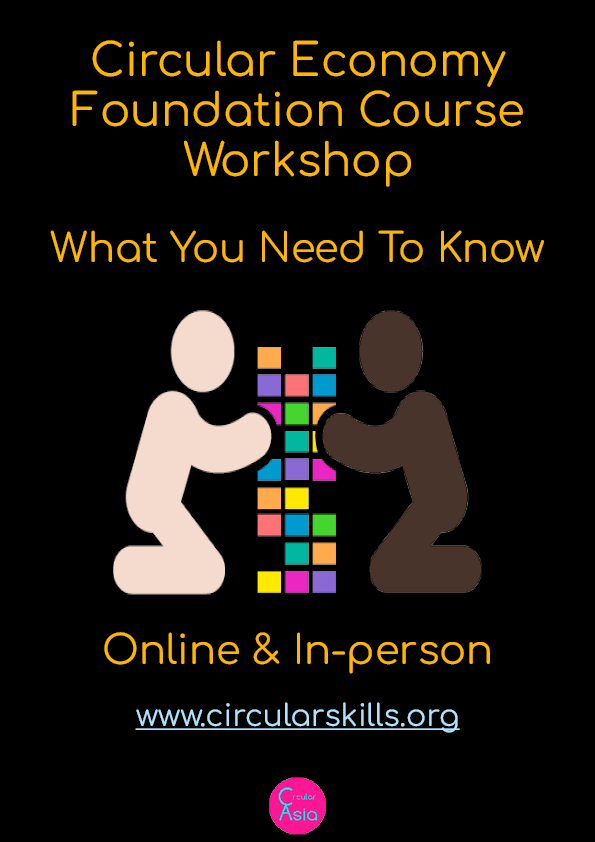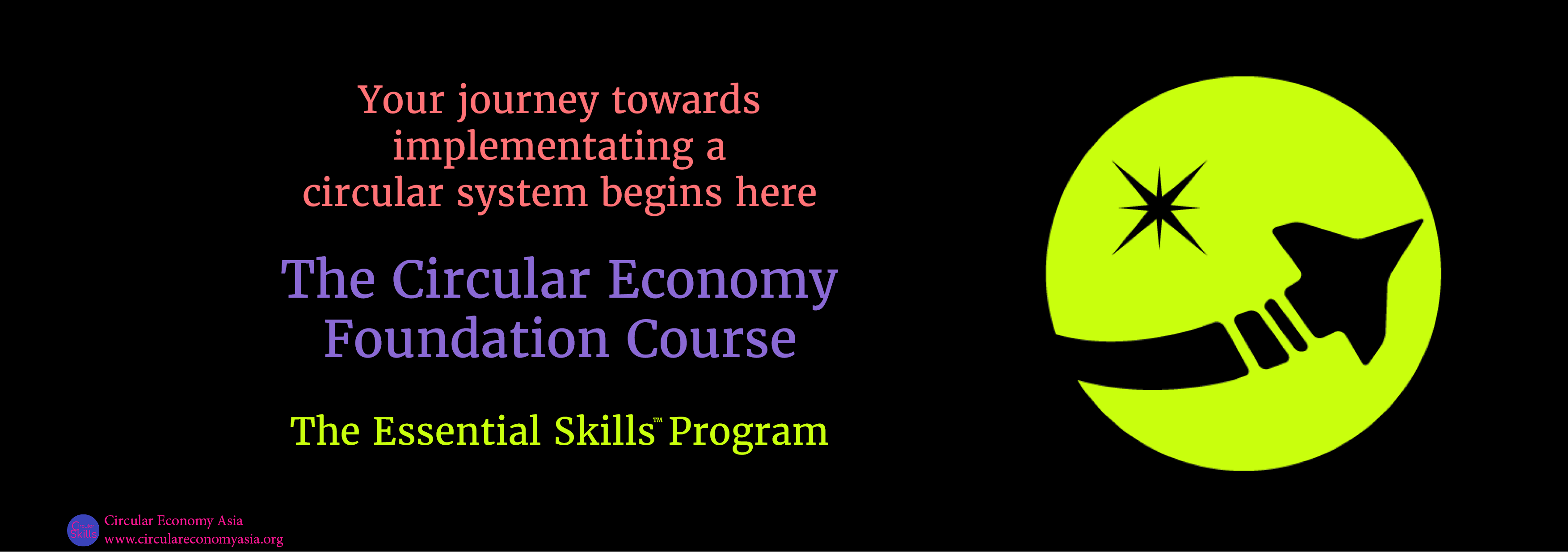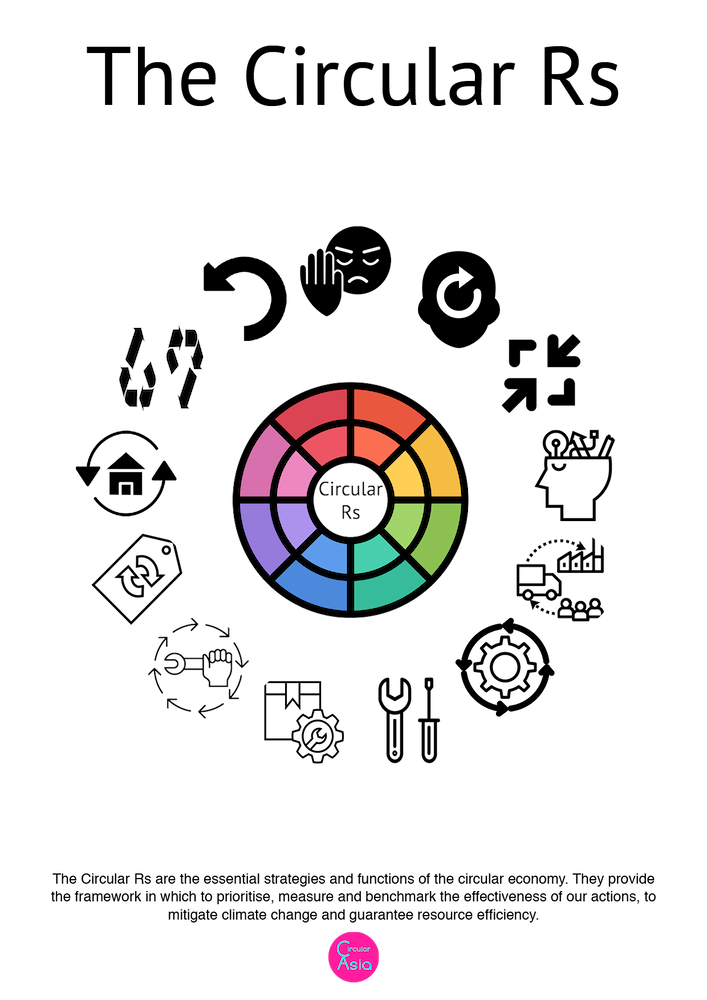Circular Economy Foundation Course
Circular Economy Foundation Course
The Circular Economy Foundation targets two types of learners. There are those learners who are looking for a more practical approach to the circular economy. The course aims to move beyond the concept of the circular economy and demonstrate how the Circular Rs are the behavioural and economic functions to improve resource management and resource efficiency.
The second type of learner are, usually, companies who are interested in implementing the circular economy. As reporting and company accountability shift to centre stage, we have included the basics of ISO 14000 Environmental Management Systems, ESRS E5 Resource Use and Circular Economy and Product Carbon Footprint Standards.
What the course offers
Participants can discover the circular economy at their own pace. The course is easy to get through, with a variety of videos to keep you entertained and downloads to fill in any gaps. The Circular Economy Foundation Course is suitable for corporates and beginners. It provides just enough information across a wide spectrum of topics to move you to the next level.
| 0. Introduction | 6. Circular & Eco Design |
| 1. The Circular Rs | 7. Circular Business Models |
| 2. The Circular Rs | 8. Life Cycle Assessment |
| 3. Resource Management | 9. Environmental Product Declaration |
| 4. Closed and Open Loop Systems | 10. The Circular Economy and Climate Change |
| 5. Materials |
Why take this course?
As the circular economy becomes more mainstream, companies will need to become more familiar with how to incorporate its principles in to their day-to-day operations. Equally important are consumers who will play a vital role in returning items for reuse, repair, remanufacture and reprocessing to preserve and conserve our natural capital.
-
- Manufacturers and brands will be better placed to focus on resource usage as part of their sustainability reporting.
- How logistics and supply chains will play a vital role in the circular economy.
- The Circular Economy Foundation course provides a historical perspective and a glimpse into the future.
- Learn about the range of circular business models.
- Discover the difference between circular economy design and eco-design.
Reporting & Standards
The European Sustainability Reporting Standards (ESRS) – E5 Resource Use and Circular Economy will, eventually, become a methodology everyone can refer to. The primary objective of ESRS E5 is to specify disclosure requirements on material impacts, risks, and opportunities that arise from resource use and circular economy, as well as related policies, actions, and financial implications. The Circular Economy Foundation course introduces participants to the basics of ESRS E5.
ISO 14000 Family of Standards provides vital information on Life Cycle Assessment and Environmental Product Declarations. A Product Carbon Footprint is the most established method for determining the climate impact of a product. The Circular Economy Foundation course introduces the GHG Protocol Product Life Cycle Accounting and Reporting Standard and the EU Product Environmental Footprint Standard – The Product Environmental Footprint.
Course overview
The strength of the circular economy lies in its focus on resource management. The UN Sustainable Development Goals and ESG (Environment – Social – Governance) all cover different areas, even if some overlap. The Circular Economy Foundation course starts by introducing learners to the pressure being placed on biodiversity and the environment through excessive and unsustainable primary raw material extraction. By becoming familiar with the aims of the circular economy we can work towards living within our planetary boundaries.
Online and In-person
Every participant who takes the in-person workshop is automatically signed into the online course. The online course provides additional details and information that the in-person workshop does not include. The in-person workshop is very hands-on and interactive focusing on the implementation tools, the Circular Rs.
Product-Use-Cycle extension not only reduces the demand for primary raw materials, it also reduces GHG emissions. Integrating the Circular Rs is the first step a company can take towards becoming a circular company.
The Circular Rs –
Course details and format
In-person Training
⇒ One full-day session
⇒ All participants will have access to online content
*Terms & Conditions Apply
Online Training
⇒ 4 x 2-hour sessions
⇒ Live instructor with Q&A at the end of each session
*Terms & Conditions Apply
All in-person workshop participants will have access to online content, downloads, course reviews and quizzes. Contact our office via the Contact Us form for a copy of the course brochure and for any additional questions you may have.
References:
- Contact Us image: pikisuperstar from Freepik
- Training icon: photo3idea_studio from Flaticon
- Online training icon: from www.icon-icons.com
- Essential Skills™ logo image: by Wes Breazell listed on The Noun Project. The image colour has been changed from black to current logo colour.
- Circular Economy Foundation Course logo image: by ProSymbols listed on The Noun Project. The image colours have been changed from black to current colours.







